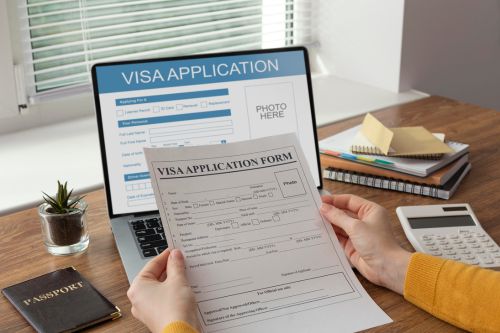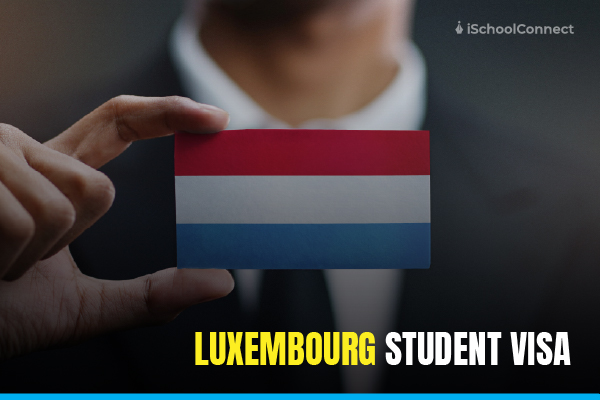Table of Contents
About SDS and Non-SDS visa applications
When applying for visas, students planning to pursue higher education in Canada might not know terms such as SDS and non-SDS. Let us first grasp both of these notions and then compare them.
Student Direct Stream (SDS), formerly known as the Students Partner Program (SPP), is a Canadian Immigration Authorities initiative that allows students to apply for visas under the SDS category. At the same time, the Non-SDS is the General Category Visa. It is yet another way to apply to study in Canada. Non-SDS is a generic visa application process that assists individuals who do not fit the visa standards to study and work in Canada for a limited time.
What is SDS?
The SDS, or Student Direct Stream, expedites the process of students acquiring their study visas through the Canada Study Permit Application. Only students from India
and Brazil are eligible for SDS. To study in Canada, candidates must meet certain conditions imposed by Immigration, Refugees, and Citizenship Canada under this program.
Visa requirements for SDS

Language proficiency examination results
Applicants must pass an English Proficiency Test within two years of the date submitting the SDS application.
Candidates can take either the IELTS Academic or the IELTS General exam.
They would need to earn at least 6.0 bands or above in each component. They are reading, speaking, writing, and listening.
Passport
Students seeking a visa in Canada must have a valid passport. If the passport expires, Immigration, Refugees, and Citizenship Canada (IRCC) will not grant the study permit, temporary resident visa (TRV), or any other document.
GIC (Guaranteed Investment Certificate)
Students must make a deposit of at least CAD 10,000 as a Guaranteed Investment Certificate (GIC). This money ensures they are secure in Canada and have additional resources to cover expenses. The funds would be held in the bank’s investment or student account and inaccessible until the applicant arrives in Canada.
The Canadian Deposit Insurance Corporation (CDIC) insures some GIC-offering banks, including NOVA SCOTIA, ICICI, CIBC, and SBI.
When students purchase a GIC certificate, they will receive a letter of attestation, the GIC certificate, the Investment Directions Confirmation, or the Investment Balance Confirmation. The bank must authenticate the client’s identification before releasing funds to students upon arrival in Canada. When the candidate arrives in Canada, they will get around CAD 2,000 plus interest, which they will receive in their student bank account. For the next 12 months, the student will receive around CAD 667 every month.
Tuition fee
Students must pay the full first-year tuition charge and produce proof of payment along with the following documents-.
- A receipt issued by the Designated Learning Institution (DLI).
- A DLI confirmation of payment in the form of an official letter
- The bank receipt demonstrates the payment proof of tuition fees paid to the DLI.
- A copy of the proof that demonstrates tuition fees transferred into a DLI repository account.
Acceptance letter
DLI accepts candidates who apply for higher study. The Canadian provincial and territory governments have designated some colleges and universities as DLIs.
Educational documents
Students must present all genuine and complete previous academic credentials. The documents must include the 10th, 12th, diploma, and graduation certificates (if applicable). A recent secondary or postsecondary educational transcript is also required.
Medical evaluation
Students have to present an initial medical confirmation document as verification of a medical examination by a panel physician. The checkup will include a full-body examination.
Statement of purpose
The Statement of Purpose (SOP) is critical in obtaining a student visa. Applicants must provide an SOP, whether for SDS or non-SDS. It is like an essay explaining why students apply for a specific course at a Canadian institution. It serves as a clarification to the visa officer regarding the candidate’s profile and hobbies.
The SOP for the Canadian High Commission is not the same as the SOP for Canadian universities or colleges. SOPs designed for colleges focus more on the specific courses and background of the candidate, as well as the candidate’s interest in the specific course.
Digital photograph
Another necessity is digital photographs of the candidate. The image must be 80% zoom on a white background and 35X45 in size.
What is Non-SDS?

Non-SDS, or the Non-Study Direct Stream, is an alternative visa application process for students who do not meet the requirements of the SDS for studying in Canada. Under the Non-SDS category, students can apply for a student visa to obtain temporary residency in Canada.
The Non-SDS Canada requirements include-
Language proficiency test
Applicants must clear a language proficiency test, such as IELTS, PTE, or TOEFL, to demonstrate their language skills.
Passport
A valid passport is essential for the student visa application. Other applicable Canadian permits and a passport should be renewed before it expires.
Guaranteed Investment Certificate (GIC)
Students need to deposit around $10,000 CAD or more in a GIC, which provides financial support upon their arrival in Canada. They can also replace it with proof of liquid funds.
Tuition fee
Students must show proof of tuition fee payment for at least six months at their DLI.
Medical examination
Students must submit a full-body medical checkup document as proof of good health.
Educational documents
Submit genuine academic documents, such as certificates from previous education levels.
Digital pictures
Students need to provide digital pictures meeting specific requirements.
Statement of purpose
A compelling essay explaining the reasons for choosing Canada as an education destination and the selected course is necessary.
Financial documents
Students must submit financial documents, including proof of income and liquid assets, to demonstrate financial stability.
Comparative analysis of SDS and Non-SDS visas
For those seeking a streamlined and expedited process, the Student Direct Stream (SDS) offers a faster route with reduced processing times and specific eligibility criteria. On the other hand, the Non-SDS route provides more flexibility regarding program choices and acceptance from a broader range of institutions.
Applicants must carefully assess their situations, academic profiles, financial capabilities, and timelines before deciding which route to pursue. It is advisable to consult with qualified immigration consultants or authorized representatives for personalized guidance and to ensure adherence to all visa application guidelines.
Key takeaways
- SDS (Student Direct Stream) and Non-SDS (Non-Study Direct Stream) are two visa application pathways for students wishing to study in Canada.
- SDS visa is for students from India and Brazil, offering faster visa processing for eligible candidates.
- Non-SDS is an alternative route for students who do not meet SDS requirements and allows them to apply for temporary residency in Canada.
- Both SDS and Non-SDS pathways have specific eligibility criteria and documentation requirements, and students must carefully choose the one that best suits their circumstances and goals.
We hope you enjoyed reading the blog and found it informative! We aim to provide valuable insights and help you make informed decisions for your educational journey. If you have any further questions or need more information about studying in Canada, click here to contact us. Our team is here to assist you!
Like this blog? Read next: How to apply to universities abroad | The ultimate guide
FAQs
Q1. Is SDS better than Non-SDS?
Ans- One advantage of the SDS program over non-SDS is that candidates do not have to submit a large number of documents to verify their financial eligibility, whereas non-SDS requires far too much documentation.
Q2. Can one apply in the SDS category with PTE score?
Ans- No, students cannot apply with a PTE score. To apply for the SDS visa, only an IELTS score of 6 or above in each component is accepted.
Q3. How much time does the SDS visa take?
Ans- Students often acquire the SDS visa in 4-5 weeks. Most student visas are processed within 20 days, assuming all eligibility criteria are met.






